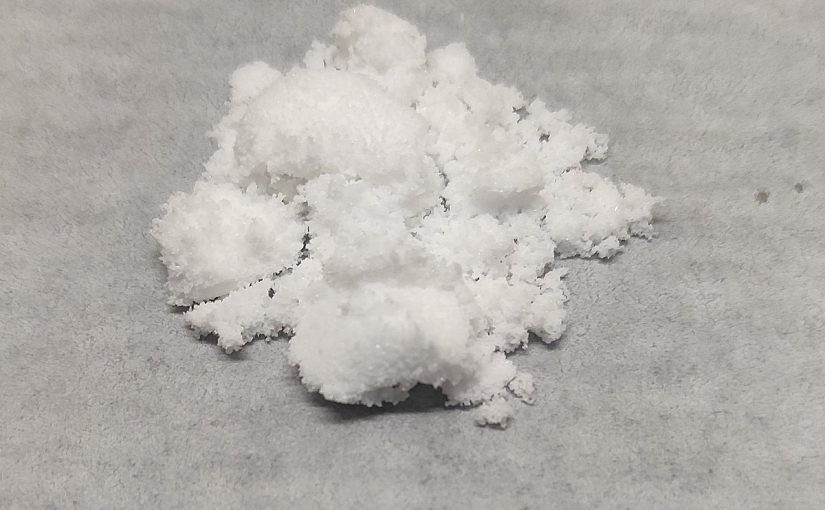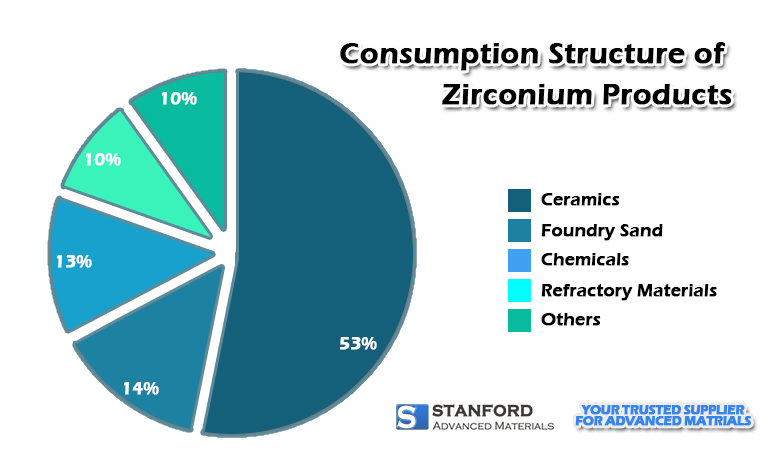Zirconium and sulfuric acid can produce a variety of compounds, the most common ones being acidic zirconium sulfate and basic zirconium sulfate. Acidic zirconium sulfate, also known as zirconyl sulfuric acid, is widely used in industry, and its molecular formula is H2[ZrO(SO4)2]•3H2O or Zr(SO4)2•4H2O. The tetrahydrate of zirconium sulfate appears as hexagonal plate crystals, while the anhydrous form is a white powder. It is a main intermediate product of zirconium and can be used as a white leather tanning agent. The preparation of zirconium sulfate from zircon involves three steps: alkali decomposition, preparation of zirconium sulfate solution, and precipitation of acidic zirconium sulfate. This article focuses on explaining these three methods of alkali decomposition. Currently, there are three methods of alkali decomposition, namely the sodium hydroxide melting method, the sodium carbonate sintering method, and the lime sintering method.

Sodium Hydroxide Fusion Method
The sodium hydroxide fusion method, also known as the alkali fusion method, involves adding zircon and sodium hydroxide to the reaction tank in a 1:1.3 ratio and reacting them at a temperature of 923-973K to form Na2ZrO3. The main reaction formula is ZrSO4+4NaOH=Na2ZrO3+Na2SiO3+2H2O, and the decomposition rate of zircon can reach about 99%. The alkali fusing material is then washed with water to remove soluble impurities such as excess alkali and sodium silicate. The resulting filter cake is sent for leaching to obtain a zirconium sulfate solution. The washing materials include sodium zirconate, sodium zirconium silicate, hydrated zirconia, and sodium titanate. The main features of this method are the low reaction temperature and the high decomposition rate of zirconium.
Sodium Carbonate Sintering Method.
Sodium carbonate sintering method, also known as the direct sintering method, involves putting zircon and sodium carbonate in a pan-type ball forming machine in a molar ratio of 1:3 to create pellets. The mixture is then sintered in a rotary kiln at 1373K, and the main reaction that takes place is:
ZrSiO4+3Na2CO3=Na2ZrO3+Na4SiO4+3CO2↑
After the firing process, the material is crushed and washed with water to eliminate soluble impurities such as sodium silicate. The resulting mixture is then filtered to obtain a filter cake, mainly comprising of sodium zirconate, which is later leached to produce a zirconium sulfate solution. Alternatively, zircon and sodium carbonate can be used in a molar ratio of 1:1.3. In this case, the primary sintering reaction is:
ZrSiO4+Na2CO3=Na2ZrSiO5+CO2↑
As observed from the reaction formula, the sintered product primarily consists of sodium silicon zirconate. The sintered product is then decomposed using sulfuric acid. During this process, zirconium produces zirconium sulfate and enters the solution, while silicon forms silicic acid, which can be effectively polymerized and removed during filtration. Although this method saves a significant amount of sodium carbonate, it consumes a considerable amount of acid and requires high reaction temperatures. The decomposition rate of zircon is approximately 95%.
Lime Sintering Method
The lime sintering method involves adding zircon and limestone (or chalk) in a molar ratio of 1:3, with an excess of 10% to 20% limestone. Then, calcium chloride with a mineral content of 5% is added, mixed evenly, and sent into a rotary kiln at a temperature of 1373-1473K for 4-5 hours. The decomposition rate of zircon is about 97%-98%. After sintering, the material is first washed with a cold solution containing 5% to 10% HCl to remove excess CaO, CaCl2, and most of Ca2SiO4. The generated colloidal silicic acid is also removed together with the solution. The resulting calcium zirconate is then leached with a solution containing 25% to 30% HCI at a temperature of 358-363K. Alternatively, sulfuric acid can be used for leaching. The biggest advantage of this method is that the decomposition agent is cheap and easy to obtain, but it has the disadvantage of high decomposition temperature and low decomposition rate.
Conclusion
In summary, zirconium sulfate is an important industrial material produced through alkali decomposition of zircon. The three primary methods of alkali decomposition are the sodium hydroxide fusion method, sodium carbonate sintering method, and lime sintering method. Each method has its advantages and disadvantages in terms of decomposition rate, reaction temperature, and cost of decomposition agents. Ultimately, the choice of method depends on the specific requirements of the production process.
For more information, please visit https://ww.samaterials.com/.

